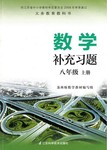��Ŀ����
����Ŀ���ٶ�Ӣ�������ʦҪ��ͬ��֮�佻��������, ��������ͬ��д���������ġ����й���10�����Դ���, ÿ���������������ÿ��������漰һ�����ʵ����ӡ�ɾ�����ġ�
����: ��ȱ�ʴ���һ��©�ַ���(��), ����������д���üӵĴʡ�
ɾ��: �Ѷ���Ĵ���б��(��)������
��: �ڴ��Ĵ��»�һ����, ���ڸô�����д���ĺ�Ĵʡ�
ע��: 1. ÿ���������ľ�����һ��;
2. ֻ������10��, ����(�ӵ�11����)���Ʒ֡�
Do you prefer to travel by plane or by train? To my opinion, there are advantages and disadvantages travelling both by plane and by train. Travel by plane is time-saving, comfortably, and you can have a good rest on the trip, but it is too expensive. Unless you travel by train, it is not expensive and quite safety and you can appreciate the beautiful scenery on both sides of the railway. However, it was too crowded and time-wasting, and we can take a good rest. So you can see every coin have two sides. You��d better to choose either of them depend on your own interest and economy.
���𰸡�1.�ڶ����е�To��ΪIn��
2.�������е�Travel��ΪTravelling��
3.�������е�comfortably��Ϊcomfortable��
4.���ľ��е�Unless��ΪIf��
5.���ľ��е�safety��Ϊsafe��
6.������е�was��Ϊis��
7.�������can�����not��
8.�������е�have��Ϊhas��
9.���һ����toȥ����
10.���һ����depend��Ϊdepending.
��������
����һƪ�����ġ����½����˳˻����к����ɻ����и������ף�����������Լ�����Ȥ�;�����ѡ����������֮һ��
��һ��������̶�������ҿ������˻����к����ɻ����и���������In one��s opinion��ij�˿������ö����ǹ̶�������Եڶ����е�To��ΪIn��
�ڶ����������ν�ﶯ�ʡ�������Ҫ������������ö����ʣ����Ե������е�Travel��ΪTravelling��
���������������ݴʡ�������Ҫ��is�ı�������ݴʣ�����comfortably��Ϊcomfortable��
���Ĵ����������ʡ����⣺�������������У������Һܰ�ȫ�������������·����������羰�����б�ʾ��������������Ե��ľ��е�Unless��ΪIf��
���崦���������ݴʡ�����and�������������е����ݴʣ���is֮��ı�����Ե��ľ��е�safety��Ϊsafe��
������������ʱ̬�������������ڵ�״̬����һ������ʱ�����Ե�����е�was��Ϊis��
���ߴ������������˼���⡣���⣺Ȼ������̫ӵ���ͺ�ʱ�����Dz��ܺú���Ϣ�����б�ʾ�����Dz��ܡ������Ե������can�����not��
�ڰ˴���������νһ�¡�every coin have two sides.��see�ı������every coin have two sides.��һ������Ӿ䣬����Ӿ������every coin�ǵ����˳Ƶ�����ν�ﶯ���õ��������Ե������е�have��Ϊhas��
�ھŴ������鳣���÷������⣺����������Լ�����Ȥ�;�����ѡ����������֮һ��had better���ö���ԭ�Σ��������һ����toȥ����
��ʮ���������ν�ﶯ�ʡ�depend on����������You������֮����������ϵ�������ڷִʣ��������һ����depend��Ϊdepending.

 ͬ����ϰ���ϴ�ѧ������ϵ�д�
ͬ����ϰ���ϴ�ѧ������ϵ�д� ͬ����ϰ����ʦ����ѧ������ϵ�д�
ͬ����ϰ����ʦ����ѧ������ϵ�д� ����ϰ�⽭��ϵ�д�
����ϰ�⽭��ϵ�д� ѧ���쳵��������������������ϵ�д�
ѧ���쳵��������������������ϵ�д�